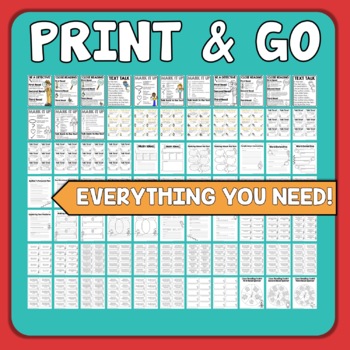Resources:
These are the resources for:
A: Twelve General Teaching Strategies
B: Twelve ELA Teaching Strategies
10
Benefits of Inquiry-Based Learning -. (2017). Retrieved from
https://www.teachthought.com/critical-thinking/10-benefits-of-inquiry-based-learning/
Annotating
and Paraphrasing Sources. (2019). Retrieved from
https://www.facinghistory.org/resource-library/teaching-strategies/annotating-and-paraphrasing-sources
CAST:
About Universal Design for Learning. (2019). Retrieved from
http://www.cast.org/our-work/about-udl.html#.XOgmdxZKiUk
Character
Maps. (2019). Retrieved from https://www.facinghistory.org/resource-library/teaching-strategies/character-maps
Clever
Prototypes, L. (2019). Plot of a Story | Plot Diagram Template. Retrieved from
https://www.storyboardthat.com/articles/e/plot-diagram
Close
Reading Protocol. (2019). Retrieved from
https://www.facinghistory.org/resource-library/teaching-strategies/close-reading-protocol
Collaborative
Learning | Center for Teaching Innovation. (2019). Retrieved from
https://teaching.cornell.edu/teaching-resources/engaging-students/collaborative-learning
Connect,
Extend, Challenge. (2019). Retrieved from
https://www.facinghistory.org/resource-library/teaching-strategies/connect-extend-challenge
Cox,
J. (2019). Top 5 Teaching Strategies. Retrieved from
https://www.teachhub.com/top-5-teaching-strategies
Effective Teaching
Strategies For The Classroom - Quizalize Blog. (2018). Retrieved from
https://www.quizalize.com/blog/2018/02/23/teaching-strategies/
Exit
Cards. (2019). Retrieved from
https://www.facinghistory.org/resource-library/teaching-strategies/exit-cards
Exit
Slips | Classroom Strategy | Reading Rockets. (2019). Retrieved from
http://www.readingrockets.org/strategies/exit_slips
Five
Strategies for Effective English Teachers. (2012). Retrieved from
https://education.cu-portland.edu/blog/classroom-resources/teaching-strategies-for-english-teachers/
Gallery
Walk. (2019). Retrieved from
https://www.facinghistory.org/resource-library/teaching-strategies/gallery-walk
Glass,
C., & Zygouris-Coe, V. (2004). Making Connections: Text to Self, Text to
Text, Text to World - Diane Kardash. Retrieved from https://sites.google.com/a/alaska.edu/diane-kardash/Home/making-connections
Goodwin,
J. (2018). Top 10 Teaching Strategies to Use in Your Classroom. Retrieved from
https://go.magoosh.com/schools-blog/top-10-teaching-strategies
Guido,
M. (2015). 20 Differentiated Instruction Strategies & Examples | Prodigy.
Retrieved from
https://www.prodigygame.com/blog/differentiated-instruction-strategies-examples-download/
How to
Motivate Students by Letting Them Choose Books. (2019). Retrieved from https://www.teachhub.com/how-motivate-students-letting-them-choose-books
Jigsaw
| Classroom Strategy | Reading Rockets. (2019). Retrieved from
http://www.readingrockets.org/strategies/jigsaw
Juraschka, R. (2019). 4
Reciprocal Teaching Strategies To Use. Retrieved from
https://www.prodigygame.com/blog/reciprocal-teaching/
Khan,
B. (2019). 4 Major Benefits of Close Reading | Literacy in Focus | A Blog For
Teachers. Retrieved from https://litinfocus.com/4-major-benefits-close-reading/
Lynch,
E. (2019). Annotating Text Strategies That Will Enhance Close Reading
[Printable Resources]. Retrieved from
https://www.sadlier.com/school/ela-blog/teaching-annotation-to-students-grades-2-8-annotating-text-strategies-that-will-enhance-close-reading
News,
B. (2015). Why peer editing is beneficial for young writers - Bright Education
Blog. Retrieved from
http://brightedblog.funeducation.com/blog/common-core-state-standards-news/why-peer-editing-is-beneficial-for-young-writers
Mansaray,
H. (2013). Nine Strategies for Reaching All Learners in English Language Arts.
Retrieved from
https://www.edutopia.org/blog/stw-expanded-learning-time-individualized-learning-hassan-mansaray
Mareco,
D. (2017). 10 Reasons Today’s Students NEED Technology in the Classroom.
Retrieved from
https://www.securedgenetworks.com/blog/10-reasons-today-s-students-need-technology-in-the-classroom
Masten,
M. (2017). 7 Reasons Why Differentiated Instruction Works | ASCD Inservice.
Retrieved from
http://inservice.ascd.org/7-reasons-why-differentiated-instruction-works/
Pappas,
C. (2015). 7 Benefits Of Mistake-Driven Learning - eLearning Industry. Retrieved
from https://elearningindustry.com/7-benefits-of-mistake-driven-learning
Text-to-Text,
Text-to-Self, Text-to-World. (2019). Retrieved from
https://www.facinghistory.org/resource-library/teaching-strategies/text-text-text-self-text-world
Think-Pair-Share
| Classroom Strategies | AdLit.org. (2019). Retrieved from
http://www.adlit.org/strategies/23277/
Top 5
Reasons Learning Vocabulary is Important. (2019). Retrieved from
https://www.k5learning.com/blog/top-5-reasons-learning-vocabulary-important
Top 5
Teaching Strategies. (2019). Retrieved from
https://www.teachhub.com/top-5-teaching-strategies
Yin,
H. (2010). Seeing the Value of Visualization | SingTeach | Education Research
for Teachers. Retrieved from http://singteach.nie.edu.sg/issue22-mathed/
Visualization
to Improve the Speed of Understanding - mysimpleshow. (2019). Retrieved from
https://www.mysimpleshow.com/visualization-improve-speed-understanding/
What is Community-Based
Learning? - Center for Teaching & Learning - Marshall University. (2019).
Retrieved from https://www.marshall.edu/ctl/community-engagement/what-is-service-learning
Why Use Gallery Walk?.
(2019). Retrieved from https://serc.carleton.edu/introgeo/gallerywalk/why.html
Word Analysis | Power
Up What Works. (2019). Retrieved from
https://powerupwhatworks.org/strategy-guide/word-analysis
Word Walls | Classroom
Strategy | Reading Rockets. (2019). Retrieved from
http://www.readingrockets.org/strategies/word_walls
Wolpert-Gawron, H.
(2016). What the Heck Is Inquiry-Based Learning?. Retrieved from
https://www.edutopia.org/blog/what-heck-inquiry-based-learning-heather-wolpert-gawron
Writing
Workshop > Overview | LEARN - Children's Literacy Initiative. (2019).
Retrieved from https://learn.cli.org/best-practices/writing-workshop/overview
Zorfass,
J. (2019). Word Analysis to Expand Vocabulary Development. Retrieved from
http://www.readingrockets.org/article/word-analysis-expand-vocabulary-development


